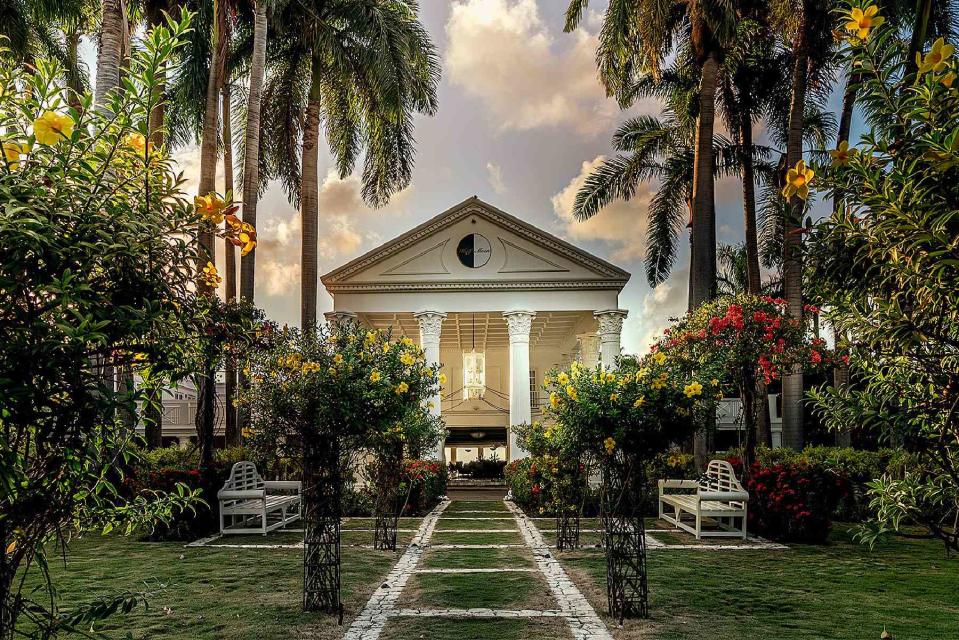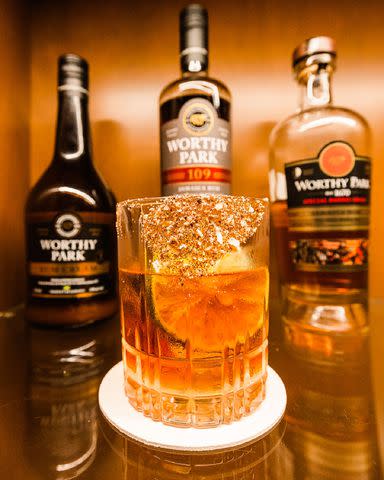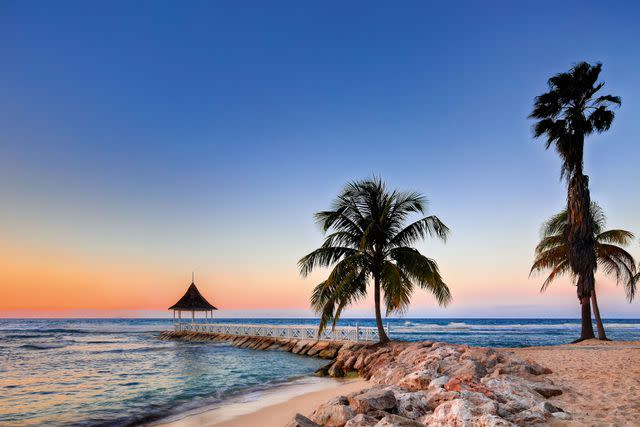Sip Rum from Jamaica’s Oldest (and First) Rum Distillery
The distillery made fewer than 400 bottles of its new cask-aged series, and you can find one at Half Moon resort.

Courtesy of Half Moon
At Lester’s Bar in Montego Bay, Jamaica, you can choose from a menu of dozens of rums, served neat or swirled inside cocktails like a lemongrass-scented mojito or a Jungle Moon, with pineapple and local ginger-infused Aperol and fresh-pressed juice. The collection at the lively bar inside Half Moon resort includes bottles made on-island, and some made in other notable rum-producing locales. There’s aged rum finished in Oloroso Sherry casks and a 50-year-old reserve for $500 a pour.
But only one bottle was made for the bar, from Jamaica's first distillery and entirely from ingredients grown on the verdant Caribbean Island. Worthy Park Estate’s Special Barrels Series was cask-aged for 14 years, and less than 400 bottles were filled — all exclusively for Half Moon guests. It’s part of the resort’s continued push to spotlight local products and makers.
“Everything from the artwork on the bottle — featuring a painting by [the late Montego Bay-based] artist Michael Lester — to the rum itself reflects the island’s history and we hope that comes across to our guests as they explore the legacy of rum first-hand,” says Giorgio Rusconi, the resort’s operations director.
Related:It's Time to Give Rum the Spotlight It Deserves
Worthy Park Estate was founded in 1670 and, after starting to cultivate sugarcane 50 years later, it began distilling rum in 1741, making it the island’s oldest. (Though it’s not the oldest continuously operating, since after hundreds of years, it stopped rum production in the decades leading up to 2005, even while continuing to farm sugarcane.)

Courtesy of Half Moon
The estate is situated near the center of the island in Lluidas Vale, a prime spot for growing the tall, fibrous plant thanks to the area’s ideal temp and rainfall. The rum’s ingredients are all local. The molasses, a byproduct of sugar production, is sent from the estate’s sugar plant to the distillery next door via an underground pipeline. Even the yeast is local; one strain used in the distilling process comes from sugarcane grown on the property. Distilled in an artisanal pot method, the special barrel series rum was aged in an ex-bourbon cask, yielding notes of mango, kumquat, and cardamom.
The rum isn’t the only element at Half Moon elevating the guest experience, though. The 400-acre resort is home to a new vegetable and herb garden, growing dozens of edible plants including lemongrass, basil, and myriad varieties of mint, which are all used in dishes and drinks served throughout the property’s restaurants, bars, and cafes. (Not to mention at the spa, where these herbs are part of treatments like the restorative Jamaican bush bath.)
Related:Following the Thread

Courtesy of Half Moon
At breakfast, diners can taste the deep red Jamaican Otaheite apple that has a floral, rose-like flavor and grows around the property. At the Sugar Mill restaurant, chef Christopher Golding makes gnocchi, substituting traditionally-called for potato with breadfruit, which grows in abundance on the island. Gardeners roam the resort to trim back coconuts in danger of falling off palm trees, and adroitly cut them open and dole them out to poolside loungers to sip fresh coconut water.
Back at Lester’s, the Lluidas Old Fashioned is made with Worthy Park’s single estate reserve and pimento liqueur made from the pimento (or allspice) trees that grow on the property, plus orange bitters, cacao, and toasted coconut on black strap molasses. For the distillery’s limited-edition Half Moon expression, though, Rusconi recommends ordering it neat.
For more Food & Wine news, make sure to sign up for our newsletter!
Read the original article on Food & Wine.

